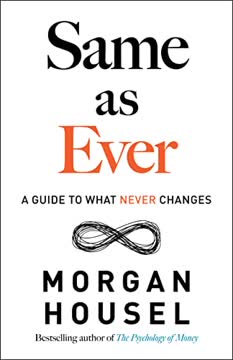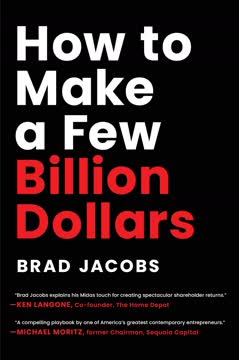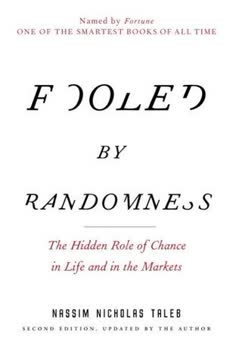重点摘要
1. 将斯多葛主义视为实用的人生哲学
“斯多葛主义旨在减少不必要的负面情绪,从而增强积极情绪。”
实用智慧。 斯多葛主义提供了一种合乎逻辑且切实可行的人生方法,无需依赖超自然信仰。它为我们应对挑战、做出决策、寻找意义提供了思维模型和框架。斯多葛主义的核心实践包括:
- 专注于自己能掌控的事物
- 重新诠释负面情境
- 练习负面想象
- 培养智慧、公正、勇气和自制等美德
古老智慧,现代应用。 虽然源自古希腊罗马哲学,斯多葛原则在当今依然极具现实意义。它们有助于管理压力、增强韧性、改善人际关系,并在快节奏且充满不确定的世界中找到人生目标。
2. 专注于你能掌控的,放下其余
“我们越看重无法掌控的事物,掌控感就越低。”
掌控的二分法。 这是斯多葛主义的核心理念,区分了我们能影响和不能影响的事物。我们能掌控的是:
- 思想
- 行为
- 反应
- 价值观和目标
而外部事件、他人看法及结果则不在掌控范围内。将精力聚焦于可控之处,能带来更高效的行动和内心的平静。
实用方法。 面对挑战时,问自己:“这在我掌控之内吗?”若否,则接受现实,专注于自己的反应;若是,则采取有目的的行动。这种心态能减少焦虑,提升自主感。
3. 重新诠释负面情境,发现机遇与成长
“我们能掌控的,是对事件的态度,而非事件本身。没有任何事物本质上是灾难性的。”
认知重构。 我们对事件的解读决定了情绪反应和行为。通过有意识地重新诠释负面情境,我们能发现积极面、学习机会和成长动力。这并非否认现实,而是选择一种赋能而非受害的视角。
具体步骤:
- 识别负面解读
- 质疑其准确性和价值
- 生成替代视角
- 选择最具建设性的诠释
成长心态。 将挑战视为学习和提升的机会,而非威胁或失败,有助于培养韧性和适应力。这种心态对个人和职业发展至关重要。
4. 培养有意义的人际关系,专注陪伴亲人
“我们生命中的每一天,都在孩子们的记忆银行里存入回忆。”
高质量陪伴。 有意义的关系需要有意识地投入时间和关注。与人互动时全情投入,减少手机或工作思绪的干扰。创造仪式感和传统,强化纽带,留下美好回忆。
实用策略:
- 定期安排与家人一对一的时间
- 练习无评判的积极倾听
- 经常表达感激与关爱
- 共同创造体验和冒险
有限时间观。 认识到关系的有限性,能增强珍惜和优先投入的动力。将每次互动视为可能的最后一次,激励我们用心经营。
5. 追求创造性热情,找到“灵魂投入”
“如果你只是为了发财而投资,却不享受过程中的挣扎和起伏,那么你注定不会幸福。”
内在动力。 在工作过程中找到乐趣和意义,而非仅仅关注结果,能带来更深的满足感和韧性。这种“灵魂投入”的态度适用于投资、写作、艺术或商业等各领域。
灵魂投入的关键要素:
- 为了精通而追求卓越
- 将挑战视为成长的一部分
- 寻找超越金钱的目标
- 持续突破创造边界
热情与实用的平衡。 虽然追随热情重要,但同样需培养能为他人创造价值的技能。找到你热爱、擅长且世界需要的交汇点。
6. 练习负面想象,提升感恩与韧性
“不要沉溺于梦想拥有你未曾拥有的东西,而应盘点你所拥有的主要福祉,并感恩地记住若失去它们你将多么渴望。”
想象失去。 经常想象失去健康、亲情、财物等珍贵之物,反而能提升幸福感。这种练习:
- 增强对现有的感恩
- 减少习以为常的适应性
- 心理上为可能的挫折做准备
实用练习:
- 想象失去亲人以增强珍惜
- 设想健康问题以重视当下
- 考虑失业以认识职业机会
平衡视角。 在关注潜在失去的同时,保持整体积极。目标是提升感恩和准备,而非焦虑或悲观。
7. 持续学习,勇于走出舒适区
“只要活着,就要不断学习如何生活。”
终身学习者心态。 保持谦逊、好奇和适应力,终身学习。这适用于职业、人际、兴趣和个人成长的各个方面。
持续成长策略:
- 广泛阅读多学科内容
- 寻求多元视角和经历
- 拥抱挑战,将失败视为学习机会
- 定期反思并更新信念与知识
扩展能力。 以小步伐走出舒适区,逐步建立信心和能力。明确想成长的领域,持续行动改进。
8. 管理时间与环境,提升效率
“我们对时间的管理极差。最初我们会怪罪Netflix和Facebook,我理解,但同时也不完全认同。”
有意识地利用时间。 将时间视为最宝贵的资源。定期审视时间使用,确保日程与优先事项和价值观一致。
效率策略:
- 时间块管理,专注工作
- 消除或合并低价值任务
- 营造利于深度工作的环境
- 运用“2分钟法则”处理小任务
能量管理。 认识到意志力和专注力有限。安排在精力充沛时处理重要任务,合理安排休息和恢复。
9. 通过解决有价值的问题找到意义,而非逃避痛苦
“人生的幸福来自拥有并解决有价值的问题!”
拥抱挑战。 没有挣扎的人生往往空虚无意义。不要试图消除所有不适,而是选择与价值观和目标相符的挑战,将困难视为成长和使命的机会。
识别有价值的问题:
- 与价值观和长远愿景一致
- 挑战自身能力极限
- 积极贡献他人或社会
- 带来进步感和成就感
痛苦与苦难。 区分必要的痛苦(成长、挑战、暂时不适)与不必要的苦难(反复纠结、逃避、自怜)。拥抱前者,减少后者。
10. 从伟大作曲家和艺术家的挣扎与胜利中汲取教训
“了解柴可夫斯基创作《佛罗伦萨回忆》时的艰难,对我来说是一种解脱。我意识到,如果柴可夫斯基这样的伟人都经历情感磨难,那么我们凡人也可以承受。”
普遍的创作挣扎。 即使是传奇艺术家,也曾面临自我怀疑、拒绝和动力低迷。理解他们的历程,能为我们的创造之路提供视角和激励。
伟大作曲家的启示:
- 在自我怀疑中坚持(柴可夫斯基)
- 克服前辈阴影(舒伯特、勃拉姆斯)
- 平衡商业成功与艺术诚信
- 通过个人挣扎发现美与意义
运用艺术智慧。 虽然我们未必创作交响乐,但这些创作巨匠的经验适用于任何需要创新、坚持和自我表达的领域。
最后更新日期:
FAQ
1. What is Soul in the Game: The Art of a Meaningful Life by Vitaliy N. Katsenelson about?
- Holistic life philosophy: The book is a collection of essays blending Stoic philosophy, creativity, parenting, investing, and personal growth, all centered on living a meaningful life.
- Personal stories and wisdom: Katsenelson shares autobiographical stories, reflections on art and music, and practical advice for self-improvement.
- Thematic structure: Organized into six sections, it covers topics like Stoicism, creativity, parenting, and lessons from classical music, with creativity as a recurring theme.
- Conversational tone: The writing is honest, humorous, and invites readers to reflect deeply on their own lives.
2. Why should I read Soul in the Game by Vitaliy N. Katsenelson?
- Unique blend of topics: The book combines investing wisdom, life philosophy, parenting, and creativity, offering a rare, holistic perspective.
- Practical Stoicism: It introduces actionable Stoic tools for managing emotions, adversity, and cultivating resilience.
- Relatable personal stories: Katsenelson’s candid accounts of his Russian upbringing, immigration, and parenting make the lessons accessible and inspiring.
- Creative and professional insights: Readers interested in creativity, self-mastery, and meaningful work will find valuable, actionable advice.
3. What are the key takeaways from Soul in the Game: The Art of a Meaningful Life?
- Invest in your life: The most important investment is in oneself, relationships, and experiences, not just material success.
- Stoic operating system: Applying Stoic principles like the dichotomy of control, reframing, and negative visualization leads to greater tranquility and resilience.
- Creativity and soul: True fulfillment comes from putting your soul into your craft, balancing art and craft, and embracing creative discomfort.
- Process over outcome: Focusing on internal, process-based values and goals brings lasting happiness and growth.
4. What does “Soul in the Game” mean according to Vitaliy N. Katsenelson?
- Beyond “skin in the game”: It’s the elevation of commitment where your work becomes part of your identity and is pursued with love and pride.
- Artisan mindset: Involves sacred taboos, continuous improvement, and a deep sense of responsibility to society and one’s craft.
- Life application: Dedicating yourself fully to your pursuits guarantees meaning and fulfillment, regardless of external success.
- Examples in practice: Jiro Ono, the sushi master, is cited as someone who embodies this philosophy through obsessive dedication.
5. How does Vitaliy N. Katsenelson describe his personal journey and background in Soul in the Game?
- Challenging Russian childhood: He grew up in Murmansk, Russia, facing scarcity, anti-Semitism, and the loss of his mother.
- Immigration to America: His family emigrated to Denver in 1991, overcoming cultural and language barriers while seizing new opportunities.
- Career evolution: Starting from entry-level jobs, he became CEO of an investment firm and developed a parallel passion for writing.
- Blending identities: His experiences as an immigrant inform his perspectives on resilience, creativity, and personal growth.
6. How does Soul in the Game by Vitaliy N. Katsenelson explain and apply Stoic philosophy?
- Stoicism as life OS: The book presents Stoicism as a practical operating system for managing emotions and focusing on what’s controllable.
- Key concepts covered: It explains the dichotomy of control, negative visualization, reframing, and the event-judgment-reaction (EJR) framework.
- Practical application: Stoic tools are used to handle adversity, anger, setbacks, and to cultivate inner tranquility.
- Classical sources: The author draws on Epictetus, Seneca, and Marcus Aurelius to illustrate Stoic ideas.
7. What is the “dichotomy of control” in Soul in the Game and how does Vitaliy N. Katsenelson recommend using it?
- Core Stoic principle: The dichotomy of control distinguishes between what we can control (our thoughts, judgments, reactions) and what we cannot (external events).
- Reduce suffering: Focusing on internal control helps reduce unnecessary suffering and increases resilience.
- Daily application: The book uses this principle for reframing, anger management, and goal setting, especially in investing and personal life.
- Empowerment: Practicing this concept puts you in charge of your emotional responses, fostering self-mastery.
8. How does reframing work in Soul in the Game and what are some examples?
- Changing perspective: Reframing means interpreting events differently to reduce suffering and find opportunity.
- Practical examples: Katsenelson shares stories like running out of gas being reframed as a family adventure, and his son turning setbacks into growth opportunities.
- Stoic foundation: The practice is rooted in Epictetus’s teaching that our opinions, not events themselves, disturb us.
- Everyday tool: Reframing is used to handle disappointments, setbacks, and to cultivate gratitude.
9. What advice does Vitaliy N. Katsenelson give about setting values and goals in Soul in the Game?
- Internal, process-based values: Focus on what you can control—effort, kindness, integrity—rather than external achievements.
- Avoid “if this, then…” traps: Don’t tie happiness to external outcomes; enjoy the journey and process itself.
- Choose meaningful problems: Embrace purposeful challenges and necessary struggle as sources of growth and fulfillment.
- Firm example: His investment firm prioritizes disciplined research and client service over chasing rankings or asset size.
10. How does Soul in the Game address creativity and the creative process?
- Art and craft balance: Creativity is a tension between exploration (art) and skill (craft), with growth coming from embracing discomfort.
- Personal creative struggles: Katsenelson shares his writing journey and parallels with composers like Tchaikovsky, highlighting perseverance through self-doubt.
- Practical advice: Structure life to allow time for creativity, use music for inspiration, and accept the ups and downs of the process.
- Soul in creativity: True creative fulfillment comes from putting your whole self into your work, aligning it with your values.
11. How does Vitaliy N. Katsenelson approach pain, setbacks, and failure—especially in investing—in Soul in the Game?
- Pain is inevitable: Investing and life are nonlinear, with ups and downs; pain and failure are part of the journey.
- Stoic tools for pain: Use the dichotomy of control, reframing, and negative visualization to process setbacks and maintain perspective.
- Harvesting pain: Pain can fuel creativity and learning, leading to improved processes and personal growth.
- Support systems: Rely on trusted relationships, healthy outlets, and avoid tying self-worth solely to outcomes.
12. What are the best quotes from Soul in the Game by Vitaliy N. Katsenelson and what do they mean?
- “Do not act as if you had ten thousand years to throw away. Death stands at your elbow.” – Marcus Aurelius: Encourages living purposefully and valuing the present.
- “You have power over your mind – not outside events. Realize this, and you will find strength.” – Marcus Aurelius: Highlights the dichotomy of control and focusing on internal responses.
- “You become responsible, forever, for what you have tamed.” – The Little Prince: Reminds us of the lasting responsibility in relationships and commitments.
- “Time discovers truth.” – Seneca: Emphasizes patience and the importance of a long-term perspective.
- “Once you decide on your occupation… you must immerse yourself in your work. You have to fall in love with your work.” – Jiro Ono: Captures the essence of having soul in the game—dedication and passion for one’s craft.
评论
《灵魂在其中》获得了极高的评价,因其对有意义生活的深刻见解而备受赞誉。读者们欣赏卡岑尔森融入个人轶事、幽默感以及源自斯多葛学派和其他哲学的智慧。此书结构独特,涵盖家庭、创造力与个人成长等多个主题,因而广受好评。许多读者认为它具有改变人生的力量,强烈推荐阅读。尽管部分评论指出其内容与其他自助类书籍存在相似之处,但大多数人仍然认为书中实用的建议和贴近生活的故事极具价值。
Similar Books















